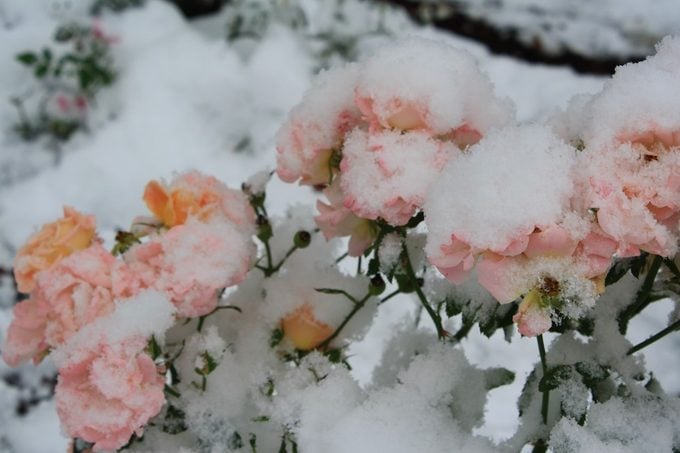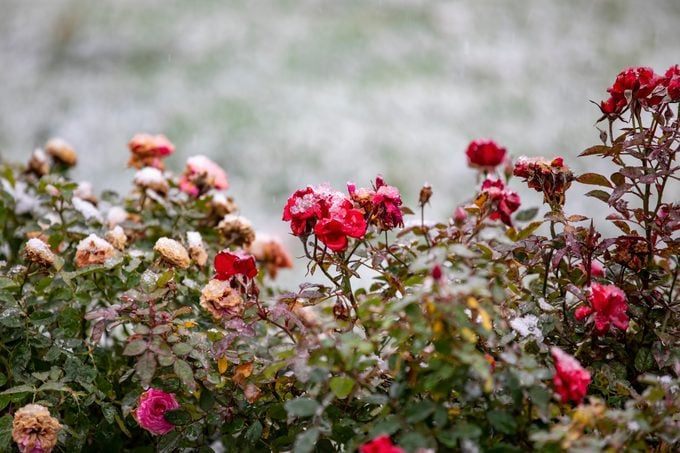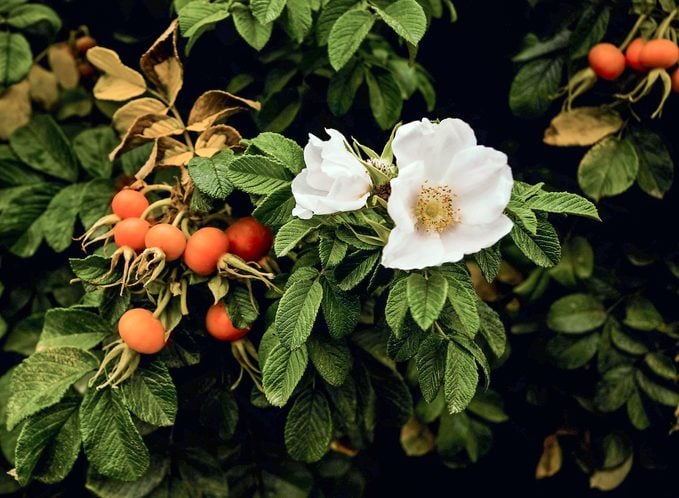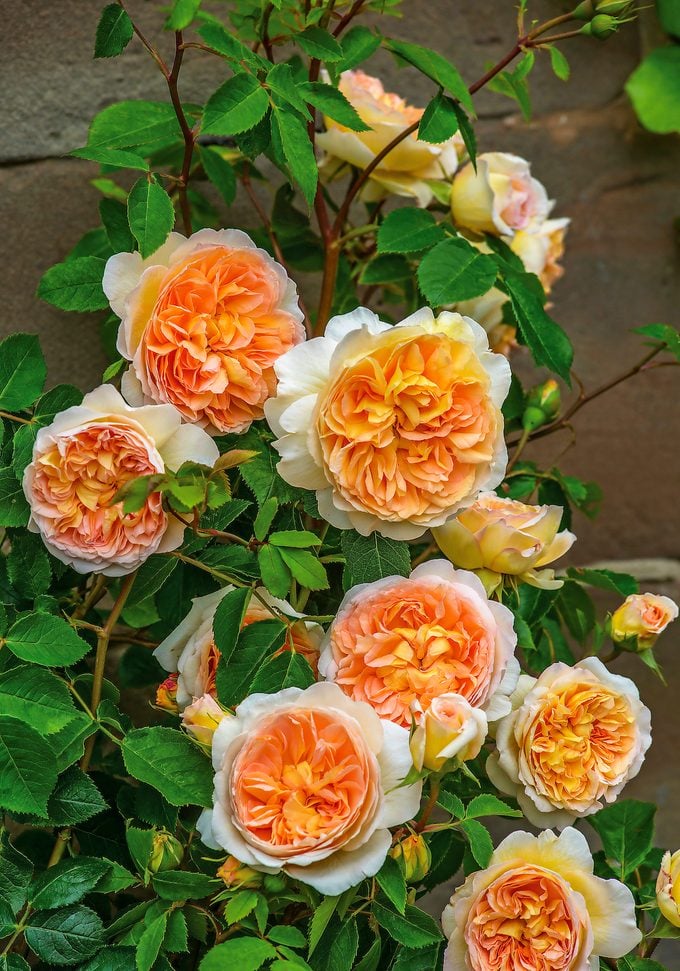How to Prepare and Prune Roses for Winter
Updated: Mar. 23, 2023
Get your rose garden ready for the cold season! Learn how to prune roses for winter with our easy-to-follow expert advice.
Expert Tips to Help Your Roses Survive Winter

The beautiful sights and scents of roses are long gone for the season, and cold weather is quickly approaching. Many shrub roses that perform well in your area are perfectly suited to withstand the freezing winter temps, but others, especially hybrid tea and other modern hybrids, need some special care. Here are some tips on how to prune roses for winter.
Learn how to choose the best roses for your garden.
Halt Fertilizers and Prune Roses Before Winter

First, halt fertilizers about 6 weeks prior to the first predicted frost in your area. This protects any tender new growth from damage by frost and freeze. You’ll also want to make sure you trim your tall roses; harsh winter winds may damage not only the canes of roses but may also rock bushes at the roots, causing harm. Prune your tall roses by one-third (no more than half) and cover them to prevent damage from cold weather.
Confused on how to prune roses for winter? Here’s how to become a pruning pro.
Clean Up Around Roses to Prevent Disease

Clear garden beds of debris, especially any diseased leaves that may have fallen from your roses. This practice helps curb problems that might sprout in spring. Never place diseased rose leaves in your compost bin. Remove them completely from your garden. Here’s how planting garlic near roses might help solve a fungus problem.
Fungal diseases wait out the winter in your garden and will greet you later—unless you remove them. Once the temps fall below freezing on a regular basis, apply a dormant spray, such as lime sulfur. It wipes out fungus on contact. Just be sure to read and follow label instructions. This helps you start the next growing season with a disease-free bed.
Psst—this gorgeous Rugosa rose deserves lots of love.
Avoid Cutting Rose Hips and Apply Mulch

Allow your roses to form hips, also known as seedpods. They provide color in the garden, are a good source of vitamin C for birds and, as is the case with many plants that produce fruit, the formation of hips sends a signal to the rose to go dormant for the season.
By fall, the mulch you applied in spring may need to be replenished. For best results, add about an inch of additional mulch protection to your beds. In colder climates, your roses may need additional protection. Mounding up mulch around the base of the rose does help. Throughout the year, the extra layers keep weeds down and hold moisture at the base of the plant where it’s needed most.
Fall is an excellent time to remove any roses that are looking a little grim. They are a resilient lot, but if a particular shrub requires a lot of care, remove it and replace it with something new. You and your garden will be much happier with a low-maintenance plant such as Knock Out Roses.
Learn more about proper care for roses at The American Rose Society.
Cover Roses With Leaves in Winter
“I read that decomposing leaves around the base of plants can be beneficial. Can I leave them around my rose bushes?” — Birds & Blooms Reader Jennifer Broadstreet Hess
Garden expert Melinda Myers: Leaves make a great mulch over the soil surface, adding organic matter and nutrients as they decompose. Dry leaves piled and packed over rose bushes can help grafted and borderline hardy roses survive cold winters.
First, surround the plant (or the whole planting bed) with hardware cloth at least 4 feet high and sunk several inches into the ground to prevent critters from dining on the plants during winter. After a week of freezing temperatures, the roses should be dormant. Prune them back to several feet above the ground and cover with tightly packed dry leaves. As the thermometer rises above freezing in spring, you can remove the leaves.
Learn 8 surprising facts about roses.
When to Uncover Roses in Spring
Melinda: Monitor your roses as extreme winter weather begins to fade. Check for signs of bud break. If you have rose cones on, they should be ventilated to avoid overheating on sunnier winter days. The cones can be removed on warm, sunny days in early spring, but keep them handy if a hard freeze is in the forecast. If you overwintered the roses using the soil mound method, start gradually removing the soil and mulch that covers the crown of the plant after frosts have passed.
Discover 15 pretty rose gifts for rose lovers.
When to Prune Climbing Roses

Should I cut back my climbing roses in spring, in fall or not at all? asks Nancy Griepentrog of Waterloo, Wisconsin.
Melinda Myers: If your roses bloom only once a year, wait to prune until right after they flower. Prune reblooming climbers in early spring before growth begins. Remove any dead, diseased or very old canes back to ground level for both types of plants. Cut side branches back 3 to 6 inches, leaving at least three or four buds to encourage more flowering. Train these shoots to grow horizontally for even more blossoms the following year. Older or winter-killed stems should be removed in late winter or early spring, before growth begins. Do additional light pruning after the first flush of flowers fades.
Backyard Tip: All climbing roses including this Bathsheba English rose (above) need to be groomed often. Remove damaged or dead leaves from bushes and the surrounding ground to keep plants disease-free.
Next learn what you should know about rose color meanings.



















